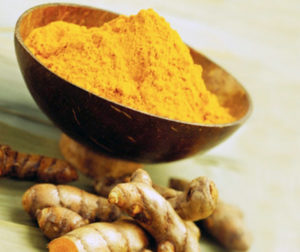Well, UX (User eXperience) is a field set to really take off!
https://www.nngroup.com/articles/100-years-ux/
Simple steps for preventing your online presence from being hacked
The recent Equifax Cybersecurity Breach was an eye opener like no other. The personal information of 145 million Americans were taken, including but not limited to social security numbers, addresses, and credit card numbers. This means that some enterprising and unscrupulous individuals have access to confidential data — and were able to accomplish this with relative ease. In light of this, cybersecurity experts have put out a number of helpful tips to help you maintain your safety online.
Use special passwords:
As much as possible, avoid birthdays, chronological number sequences, literary quotes, and popular song lyrics. According to News.USF.edu, hackers have software to guess and crack passwords in seconds. Instead, use phrases or statements known only to you (“The chair is against the wall”), or the first letters of each word in those statements (“tciatw”).
Don’t use the same password more than once:
Utilizing duplicate passwords for multiple accounts make it easier for hackers to enter these accounts.
Change passwords every six months:
Though this seems tedious, switching up your passwords can make a world of difference.
Avoid clicking on links in emails and opening attachments:
Ensure first that the emails are authentic, meaning that they don’t come from trick email addresses (e.g. “lotsamoney.com”). To check if links are safe, just hover your cursor over them. Doing this will show the address. In line with this, steer clear of any ads or apps in these emails.
Be wary of apps:
If you really must download apps, do so from the app store for your operating system. And before you install them, check to see if they won’t be accessing unnecessary information (e.g. a drawing app doesn’t need to see your contacts list).
Use secure networks:
If you can, avoid using public WiFi networks. They may be convenient, but they’re not secure. Connecting to public WiFi leaves you vulnerable and exposed to any hackers keeping an eye on that particular network. (Related: Software security group demonstrates how hackers can use ransomware to harm and potentially kill hospital patients.)
Keep up to date with security measures:
Make use of antivirus software and ensure that it’s up to date, and make it a point to do the same for any security features your browser and operating system may have. This will give you a much-needed extra layer of protection whenever you’re online. In addition, choose multi-factor authorization. It’s an extra bit of work but totally worth it, since a second level of verification can notify you if and when someone is attempting to hack into your account.
Look for the lock:
Specifically, the little green padlock before the website URL in the web address bar. The padlock serves as an indication to let you know that your login and account information is encrypted and won’t fall victim to unauthorized access.
https://nexusnewsfeed.com/article/science-futures/simple-steps-for-preventing-your-online-presence-from-being-hacked/
Some Of The Best Words
You Can Change The Ending
Xmas One More Sleep
Physicians for Informed Consent Finds MMR Vaccine Causes Seizures in 5,700 U.S. Children Annually

The California-based nonprofit organization, Physicians for Informed Consent (PIC), recently reported in The BMJ that every year about 5,700 U.S. children suffer seizures from the measles, mumps and rubella (MMR) vaccine.
This finding is derived from results of the most statistically powered safety study ever to measure the association between MMR vaccination and febrile seizures. More than half a million children were evaluated, both vaccinated and unvaccinated, from a Danish population that is relied upon globally to examine vaccine safety. The results showed that seizures from the MMR vaccine occur in about 1 in 640 children up to two weeks following MMR vaccination. Applying this risk of seizures to the 3.64 million U.S. children vaccinated with a first dose of MMR every year results in about 5,700 annual MMR-vaccine seizures.
“To make accurate and ethical public health decisions, the risks of a vaccine must be compared to the risks of the disease one is trying to prevent,” said Dr. Shira Miller, PIC president and founder. “When considering the MMR vaccine to prevent measles, the risks of the MMR vaccine need to be compared to the risks of measles.”
There is a five-fold higher risk of seizures from the MMR vaccine than seizures from measles, and a significant portion of MMR-vaccine seizures cause permanent harm. For example, 5% of febrile seizures result in epilepsy, a chronic brain disorder that leads to recurring seizures. Annually, about 300 MMR-vaccine seizures (5% of 5,700) will lead to…
http://vaxxter.com/physicians-for-informed-consent-finds-mmr-vaccine-causes-seizures-in-5700-u-s-children-annually/
Reverse Insulin Resistance With These 8 Foods

Research indicates that you don’t need drugs to control blood sugar. Food, herbs, and spices are the future of medicine.
Again, regular users of my products will be pleased to note that all 8 of these ingredients are in my top bars and powders!
Over 80 million Americans have insulin resistance that can lead to diabetes. And you could be on the road to diabetes for 10 years or more and never even know it. Here’s what happens.
The hormone insulin directs your cells to open up and take in glucose from the blood. With insulin resistance, your cells become desensitized to insulin. They ignore the instructions to open up and take in glucose. Your body keeps producing more insulin to try to get the message heard. But it doesn’t work. And your insulin levels rise higher and higher.
Those chronically high insulin levels cause rapid weight gain, premature aging, high blood pressure, heart disease, and higher cancer risks. Eventually they lead to type 2 diabetes.
Herbs, spices and foods are your first line of defense. Here are eight that can help restore and maintain your cells’ sensitivity to insulin.
1. Turmeric: 100% Effective In Preventing Diabetes
A 2009 study found curcumin, an active compound found in turmeric, was 500 to 100,000 times more effective than the prescription drug Metformin at activating glucose uptake.[i]
In another study of 240 pre-diabetic adults, patients were given either 250 milligrams of curcumin or a placebo every day. After nine months, NONE of those taking curcumin developed diabetes but 16.4% of the placebo group did. In other words, the curcumin was 100% effective at preventing Type 2 diabetes.
2. Ginger: Lowers Fasting Blood Glucose by 10.5%
In a randomized, double-blind, placebo-controlled trial 88 diabetics were divided into two groups. Every day one group received a placebo while the other received 3 one-gram capsules of ginger powder. After eight weeks, the ginger group reduced their fasting blood sugar by 10.5%. But the placebo group INCREASED their fasting blood sugar by 21%. In addition, insulin sensitivity increased significantly more in the ginger group.[ii]
In another study, researchers proved that 1600 mg per day of ginger improves eight markers of diabetes including insulin sensitivity.[iii]
Many other studies prove the value of ginger for diabetes. For a complete list of studies visit Green Med Info’s page on Ginger Health Benefits.
3. Cinnamon: Less Than Half a Teaspoon A Day Reduces Blood Sugar Levels
Cinnamon is one of the oldest spices and most popular spices. It’s been used for millennia both for its flavoring and medicinal qualities.
Cinnamon has been shown to normalize blood sugar levels in type 2 diabetics by improving the ability to respond to insulin. A meta-analysis of eight clinical studies shows that cinnamon or cinnamon extracts lower fasting blood glucose levels.[iv]
Cinnamon works in part by slowing the rate at which the stomach empties after eating. In one study subjects ate about a cup of rice pudding with and without about a teaspoon of cinnamon. Adding the cinnamon slowed the rate the stomach emptied from 37% to 34.5% and significantly slowed the rise in blood sugar levels. Even less than a half of a teaspoon a day reduces blood sugar levels in type 2 diabetics.[v]
Here are 5 more reasons to eat cinnamon every day.
4. Olive Leaf Extract: Results Comparable to Metformin
University of Auckland researchers proved that olive leaf extract decreases insulin sensitivity.
In a randomized, double-blinded, placebo-controlled study, 46 overweight men were divided into two groups. One group received capsules containing olive leaf extract and the other group received a placebo. After 12 weeks, olive leaf extract lowered insulin resistance by an average of 15%. It also increased the productivity of the insulin-producing cells in the pancreas by 28%.[vi]
The researchers noted that supplementing with olive leaf extract gave results “comparable to common diabetic therapeutics (particularly metformin).”
5. Berries Lower After-Meal Insulin Spike
Studies show the body needs less insulin for sugar balance after a meal if berries are also eaten. In a study of healthy women in Finland, subjects were asked to eat white and rye bread with or without a selection of different pureed berries. Starch in the bread alone spikes after-meal glucose levels. But the researchers found that adding berries to the bread significantly reduced the after-meal insulin spike.
Strawberries, bilberries, lingonberries, and chokeberries were effective. So was a mixture consisting of strawberries, bilberries, cranberries, and blackberries.[vii]
6. Black Seed (Nigella Sativa): Just 2 Grams Reduces Insulin Resistance
In a study of 94 diabetic patients, researchers prescribed either 1, 2 or 3 grams a day of Nigella sativa capsules. They found that at the dose of 2 grams per day, black seed significantly reduced fasting blood glucose and insulin resistance. The higher dose of 3 grams per day did not result in additional benefits.[viii]
Black seed has been treasured for thousands of years for its healing properties. It is sometimes referred to as Roman coriander, black sesame, black cumin, and black caraway. It’s been called the remedy for everything but death.
7. Spirulina Increases Insulin Sensitivity by 225%
In a randomized study of insulin-resistant patients, researchers compared the power of spirulina and soy to control insulin levels.[ix] They assigned 17 patients to receive 19 grams of spirulina a day. The other 16 patients received 19 grams of soy. After eight weeks the spirulina group on average increased their insulin sensitivity by 224.7% while the soy group increased their insulin sensitivity by 60%.
In addition, 100% of the spirulina group improved their insulin sensitivity while only 69% of the soy group improved.
8. Berberine Just As Good as Three Different Diabetes Drugs
Berberine is a bitter compound found in the roots of several plants including goldenseal, barberry, and Oregon grape. Studies prove it’s just as good as prescription diabetes drugs.
Chinese researchers compared berberine to metformin in a pilot study of 36 patients. They found berberine lowered blood sugar levels just as well as metformin in just three months. The patients also significantly decreased their fasting blood glucose, and their after-meal blood glucose.
In the same study, researchers gave berberine to 48 diabetics for three months. After only one week, berberine lowered both fasting and post-meal blood glucose levels. In addition, their insulin resistance dropped 45%.[x]
Other researchers conducted a meta-analysis of 14 studies involving 1,068 participants. They found berberine performed just as well as metformin, glipizide and rosiglitazone. Those are three of the top diabetes drugs on the market.[xi] And berberine has no serious side effects.
For more than 70 studies on this herbal compound visit Green Med Info’s page on berberine
http://www.greenmedinfo.com/blog/reverse-insulin-resistance-these-8-foods
Want to Slow Aging, Increase Energy and Feel Better?
I received this newsletter from Dr Al Sears, a pioneer in the practice of anti-aging health care. It provides data you may have heard but probably aren’t fully applying.
The link takes you to a sales page for a product he formulated to help resolve the conditions. Regular users of my bars and powders will be very pleased to know I have had those ingredients in my products for years.
Tom,
“Chew this.” I was instructed.
“But don’t swallow. Just tell me when IT happens.”
IT?
What was IT?
I’d have to find out. My researcher’s son — who enlisted me in his science experiment — wasn’t telling.
So I obliged and started chewing.
It tasted just as I expected at first. Bland. Almost cardboard-like.
And then the strangest thing occurred.
After about a minute, a hint of sweetness tickled my tongue. I kept chewing. A few seconds later, it intensified… like I was sucking on candy. And a few seconds after that it felt like I had an entire spoonful of sugar in my mouth.
What happened?
Like a shredder rips paper into little strips… my teeth and enzymes in my saliva broke down the complex molecules in the food.
In a nutshell, simply chewing the food longer revealed what was REALLY inside the food.
Now, the food I was asked to chew was what many people would consider harmless. Some would even call it healthy.
A cracker.
But as you’ve just seen, essentially it was no different than eating sugar.
That’s right… the complex carbohydrates found in starchy foods like rice, pasta, and bread quickly turn into simple carbohydrates that have the same effect on your body as sugar.
Which means they have the same harmful health effects on your body that sugar does.
But so what? How much sugar can be in a cracker?
A lot more than you would think.
Just three measly crackers break down into the equivalent of ONE teaspoon of sugar.
To put this into perspective, just look at the American Heart Association recommendations for maximum added sugar. No more than 6 teaspoons per day for women… and 9 teaspoons per day for men.
That means 18 crackers will put you over your daily sugar intake!
And crackers aren’t the only food that will send your blood sugar soaring.
One slice of whole grain bread breaks down into the equivalent of almost 3 teaspoons of sugar.1
Just half a cup of cooked spaghetti2 turns into roughly 5 teaspoons of sugar.
And a small snack size bag of potato chips will hit you just as hard as 11 teaspoons of sugar!
And that’s just for starters…
Breakfast cereals… bagels… cookies… rice… mashed potatoes… the list goes on. They may have vitamins. They may have minerals. But metabolically speaking, your body treats them just like if you eat sugar.
Over the past few days, I’ve shown you how this hidden source of dietary sugar is behind Syndrome Zero. And the skyrocketing numbers of all chronic disease.
Which is why you should immediately stop consuming sugars and starchy foods.
That will stop any further damage.
Now, up until this point, that’s all you could do.
But I’ve recently made a breakthrough that repairs any damage you’ve already done. It’s a godsend for people with high blood sugar… or… who have trouble producing insulin.
It restores your body’s natural, fast-acting, fat-destroying metabolism.
And reverses your risk for a wide swath of chronic diseases caused by Syndrome Zero.
Up until a few years ago, this was impossible.
But thanks to advances in stem cell technology, you can now banish your blood sugar concerns in just 30 seconds.
I’ve been quietly testing this in my private practice. And I’ve seen the life-changing results in my patients first-hand.
Click here for all of the details.
To Your Good Health,
Al Sears, MD, CNS
https://www.whatissyndromezero.com/transcript
Dogs And Roomba Don't Mix
Shared in the interests of public service. That fact that you may laugh yourself hoarse is not my fault!
So, last week, something pretty tragic happened in our household. It’s taken me until now to wrap my head around it and find the words to describe the horror. It started off simple enough – something that’s probably happened to most of you.
Sometime between midnight and 1:30am, our puppy Evie pooped on our rug in the living room. This is the only time she’s done this, so it’s probably just because we forgot to let her out before we went to bed that night. Now, if you have a detective’s mind, you may be wondering how we know the poop occurred between midnight and 1:30am. We were asleep, so how do I know that time frame?
Why, friends, that’s because our Roomba runs at 1:30am every night, while we sleep. And it found the poop. And so begins the Pooptastrophe. The poohpocalypse. The pooppening.
If you have a Roomba, please rid yourself of all distractions and absorb everything I’m about to tell you.
Do not, under any circumstances, let your Roomba run over dog poop. If the unthinkable does happen, and your Roomba runs over dog poop, stop it immediately and do not let it continue the cleaning cycle. Because if that happens, it will spread the dog poop over every conceivable surface within its reach, resulting in a home that closely resembles a Jackson Pollock poop painting.
It will be on your floorboards. It will be on your furniture legs. It will be on your carpets. It will be on your rugs. It will be on your kids’ toy boxes. If it’s near the floor, it will have poop on it. Those awesome wheels, which have a checkered surface for better traction, left 25-foot poop trails all over the house. Our lovable Roomba, who gets a careful cleaning every night, looked like it had been mudding. Yes, mudding – like what you do with a Jeep on a pipeline road. But in poop.
Then, when your four-year-old gets up at 3am to crawl into your bed, you’ll wonder why he smells like dog poop. And you’ll walk into the living room. And you’ll wonder why the floor feels slightly gritty. And you’ll see a brown-encrusted, vaguely Roomba-shaped thing sitting in the middle of the floor with a glowing green light, like everything’s okay. Like it’s proud of itself. You were still half-asleep until this point, but now you wake up pretty damn quickly.
And then the horror. Oh the horror.
So, first you clean the child. You scrub the poop off his feet and put him back in bed. But you don’t bother cleaning your own feet, because you know what’s coming. It’s inevitable, and it’s coming at you like a freight train. Some folks would shrug their shoulders and get back in bed to deal with it in the morning. But you’re not one of those people – you can’t go to sleep with that war zone of poop in the living room.
So you clean the Roomba. You toss it in the bathtub to let it soak. You pull it apart, piece-by-piece, wondering at what point you became an adult and assumed responsibility for 3:30am-Roomba-disassembly-poop-cleanups. By this point, the poop isn’t just on your hands – it’s smeared up to your elbows. You already heard the Roomba make that “whirlllllllllllllllll-boop-hisssssssss” noise that sounds like electronics dying, and you realize you forgot to pull the battery before getting it wet.
Oh, and you’re not just using profanity – you’re inventing new types of profanity. You’re saying things that would make Satan shudder in revulsion. You hope your kid stayed in bed, because if he hears you talking like this, there’s no way he’s not ending up in prison.
Then you get out the carpet shampooer. When you push it up to the rug – the rug that started it all – the shampooer just laughs at you. Because that rug is going in the trash, folks. But you shampoo it anyway, because your wife loved that damn rug, and you know she’ll ask if you tried to clean it first.
Then you get out the paper towel rolls, idly wondering if you should invest in paper towel stock, and you blow through three or four rolls wiping up poop. Then you get the spray bottle with bleach water and hose down the floor boards to let them soak, because the poop has already dried. Then out comes the steam mop, and you take care of those 25-ft poop trails.
And then, because it’s 6am, you go to bed. Let’s finish this tomorrow, right?
The next day, you finish taking the Roomba apart, scraping out all the tiny flecks of poop, and after watching a few Youtube instructional videos, you remove the motherboard to wash it with a toothbrush. Then you bake it in the oven to dry. You put it all back together, and of course it doesn’t work. Because you heard the “whirlllllllllllllll-boop-hissssssss” noise when it died its poopy death in the bathtub. But you hoped that maybe the Roomba gods would have mercy on you.
But there’s a light at the end of the tunnel. After spending a week researching how to fix this damn £350 Roomba without spending £350 again – including refurb units, new motherboards, and new batteries – you finally decide to call the place where you bought it. That place called Hammacher Schlemmer. They have a funny name, but they have an awesome warranty. They claim it’s for life, and it’s for any reason.
So I called them and told the truth. My Roomba found dog poop and almost precipitated World War III.
And you know what they did? They offered to replace it. Yes, folks. They are replacing the Roomba that ran over dog poop and then died a poopy, watery death in the bathtub – by no fault of their own, of course.
So, mad props to Hammacher Schlemmer. If you’re buying anything expensive, and they sell it, I recommend buying it from them. And remember – don’t let your Roomba run over dog poop…
Someone Asked Twitter To Name A Badder B*tch Than Taylor Swift, Probably Did Not Expect A Reaction Like This

Ignore the Taylor Swift slights and read the stories. Amazing courage!
https://www.boredpanda.com/inspirational-women-better-than-taylor-swift-xnulz/



